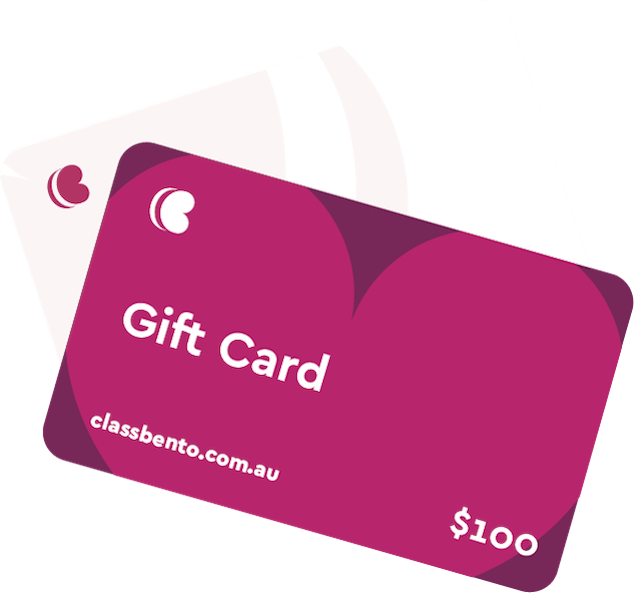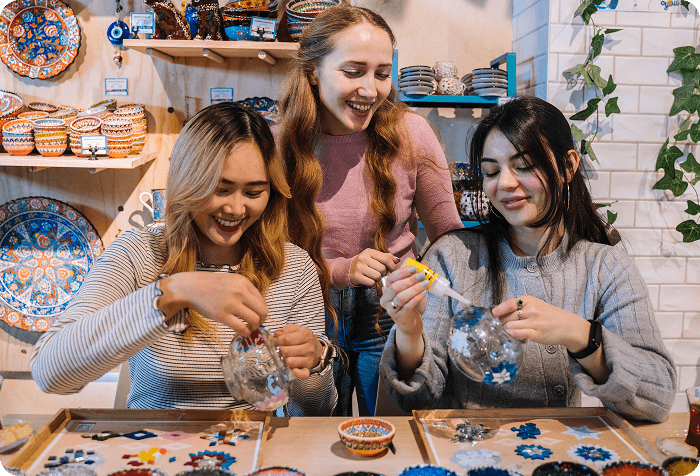In this story:
Ever wanted to take advantage of your DSLR camera that’s been gathering dust? Well, now's your chance to learn the ins and outs of the trade at DSLR photography classes in Melbourne! It’s the perfect activity to get outside, enjoy being surrounded by nature and capture everyday moments with your loved ones.
But what makes one photo ordinary and another the kind that stops you in your tracks? It could be as simple as the subject matter, a breathtaking landscape or an intimate portrait of a loved one. But it could also be a matter of how the light falls on your subject, or the composition of the photo---that is, where things are placed within the frame.
There is so much to learn, but as your knowledge grows, so will your creativity. And in time, you will get some stunning results. Fret no more, absorb some expert instruction from photography classes in Melbourne and get ready to expand your photo library with some interesting and beautiful images.
If you feel a tad overwhelmed by the manual mode of your DSLR camera, there is a range of interactive and fun photography workshops specialising in DSLR photography on offer in Melbourne. If you’re looking for romantic things to do in Melbourne, why not take your partner along to share the experience?
A good place to start would be the basic photography skills class. Your experienced guide will teach you the basics of how to use a DSLR camera and will help get you out of auto mode and feed your fearlessness to handle manual mode! You'll gain the confidence to make the most of your camera's manual mode, unlocking the secrets of ISO, shutter speed and aperture.
Looking to up your photography game in Melbourne's low light beauty? Alfonso’s night photography course! Your experienced travel photographer will not only take you to some of the most picturesque and iconic spots, but teach you how to take the best photos along the way, making his class one of the most fun things to do in Melbourne. You’ll explore natural settings like the Yarra River, as well as city structures like Flinders Street Station, Federation Square and Graffiti Laneways.
If you’re after a truly inspiring and personal experience, you might consider the inspiring portrait photography workshop. Your teacher will guide you on everything from studio lighting and depth of field to camera angles and perhaps most importantly, how to connect with your model and help them feel comfortable so you can get the best picture possible.
Let's start with the basics

In the meantime, let’s get started with your photography training. Before you attend your photography course in Melbourne, it’s a good idea to try to get your head around a couple of technical aspects of your DSLR. First, it’s useful to try to understand the Exposure Triangle. This term describes the relationship between aperture, shutter speed and ISO. It’s a bit of an art form to balance all three for a photo.
What is shutter speed?

Put simply, the shutter speed is the amount of time your camera sensor is exposed when taking a photo. When you use a longer shutter speed, you end up with a motion blur in your photo – think of a waterfall photo where the rushing water is blurred. Alternatively, if your shutter speed is short, you can eliminate movement and capture a moving object as if it’s suspended in air, like a bird in flight, frozen still and in sharp focus.
In addition, shutter speed can be important in what level of brightness you can capture in your photo. However shutter speed works in conjunction with aperture and ISO to manage light and brightness too.
What is aperture?

Aperture is an easy concept to understand if you think about how your eyes work. As you move between bright and dark environments, the iris in your eyes either expands or shrinks, controlling the size of your pupil. In a similar way, the aperture can be defined as the opening in a lens through which light passes to enter the camera. Aperture is measured in numbers that are called f-numbers or f-stops. The numbers jump in sequence and each “stop” along the way means you are either doubling or halving the amount of light being allowed in (depending on the direction you’re moving in).
Let’s pause and unpack the f-stop numbers for a second. This is one of the biggest hurdles for beginner photographers because it is confusing at first glance. Small numbers represent large apertures, whereas large numbers represent small apertures.
There is a simple explanation and once you understand that, you’ll be better equipped to decide which number you need. Aperture is a fraction. For instance, f/2.8 means the full lens size, divided by 2.8, which gives you a large opening. F/16 is the lens size divided by 16, meaning you have a tiny opening.
What is ISO?

The ISO is the final variable in The Exposure Triangle. Higher ISO values mean that the sensor does not need to collect as much light to make a correct exposure. Lower ISO numbers mean that the sensor will require more light to make an exposure.
Another important thing to consider is the depth of field in a photograph. This refers to the amount of the image that is in sharp focus. The whole feel of the photo can change dramatically depending on which depth of field you choose to use. Some photos have a “shallow” or “thin” depth of field. Imagine a photo of a person where you can see their body and face in the foreground perfectly clearly but the background behind them is completely blurred. One way of achieving that result is by using a large aperture. Conversely, a “deep” depth of field occurs when both foreground and background are in sharp focus. You might want to take this approach for landscape photography, where a small aperture can help create this effect.
Do a little light research
It can be worthwhile to do a little research about history’s most famous photographers. Dorothea Lange is worth looking up, for her stunning portrait photos taken in America during the Depression in the 1930s. Or perhaps you could find some inspiration in the work of one of the world’s most famous photographers, Ansel Adams. He photographed landscapes and was evidently a nature lover, being a prominent champion of early environmental and conservation movements. It’s also worth exploring Annie Leibovitz’s celebrity portraits, as she has captured some of the most iconic images of the last half-century. Amongst her most well-known photos are one of a naked John Lennon curled around his wife Yoko Ono, just hours before he was shot in New York.
Finally, put what you learnt into practice
Now that you’ve learnt about the different terms of ISO, aperture and shutter speed and had some creative inspiration, it’s your turn to put into practice at one of our photography classes in Melbourne. If you’re looking for experience gifts for photography lovers or want to master your own DSLR camera, simply book in a photography workshop and let the fun begin!






































